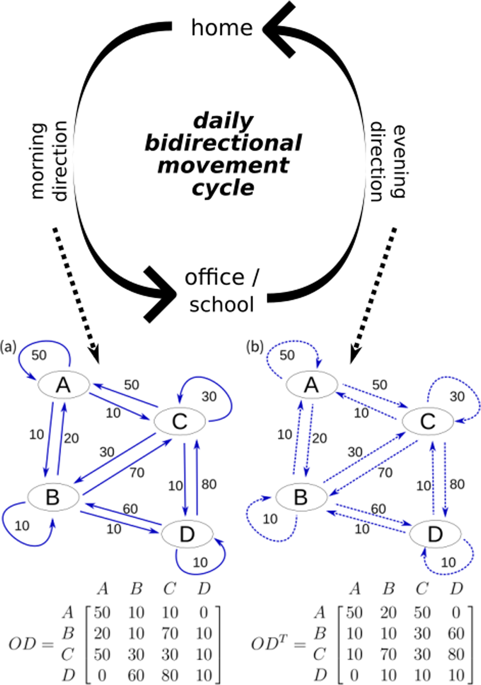
Paper
Huang C. Y., Chin, W. C. B., Wen, T. H., Fu, Y. H., & Tsai, Y. S. (2019). EpiRank: Modeling bidirectional disease spread in asymmetric commuting networks, Scientific Reports. 9: 5415.
Abstract
Commuting network flows are generally asymmetrical, with commuting behaviors bi-directionally balanced between home and work locations, and with weekday commutes providing many opportunities for the spread of infectious diseases via direct and indirect physical contact. The authors use a Markov chain model and PageRank-like algorithm to construct a novel algorithm called EpiRank to measure infection risk in a spatially confined commuting network on Taiwan island. Data from the country’s 2000 census were used to map epidemic risk distribution as a commuting network function. A daytime parameter was used to integrate forward and backward movement in order to analyze daily commuting patterns. EpiRank algorithm results were tested by comparing calculations with actual disease distributions for the 2009 H1N1 influenza outbreak and enterovirus cases between 2000 and 2008. Results suggest that the bidirectional movement model outperformed models that considered forward or backward direction only in terms of capturing spatial epidemic risk distribution. EpiRank also outperformed models based on network indexes such as PageRank and HITS. According to a sensitivity analysis of the daytime parameter, the backward movement effect is more important than the forward movement effect for understanding a commuting network’s disease diffusion structure. Our evidence supports the use of EpiRank as an alternative network measure for analyzing disease diffusion in a commuting network.
Read article here:
- Official website: EpiRank: Modeling bidirectional disease spread in asymmetric commuting networks, Scientific Reports,
- ResearchGate: Abstract and full text (on request or downloadable directly),
- Please contact me (by Gmail ).
